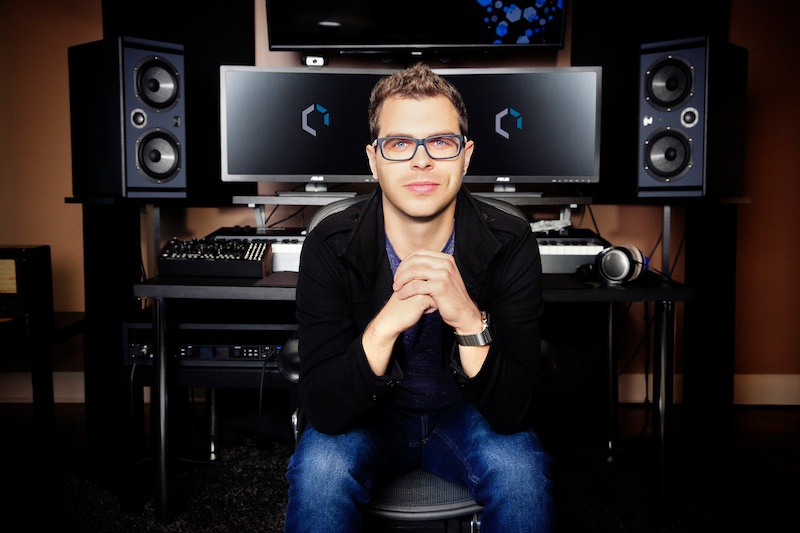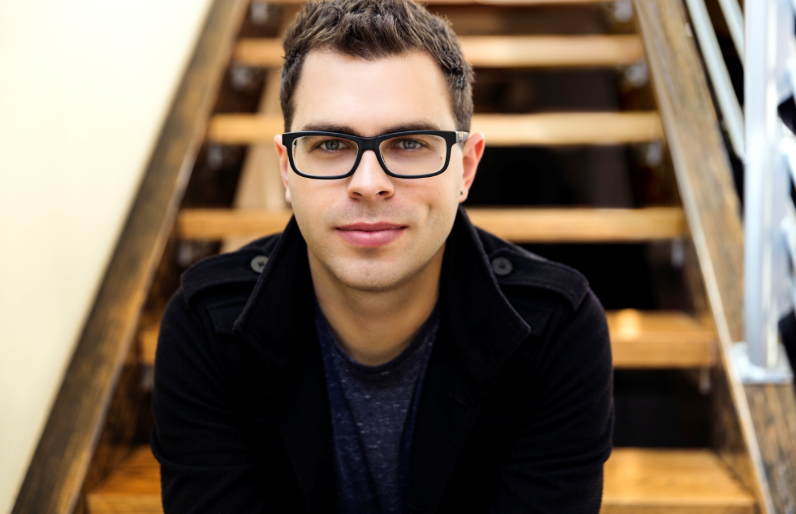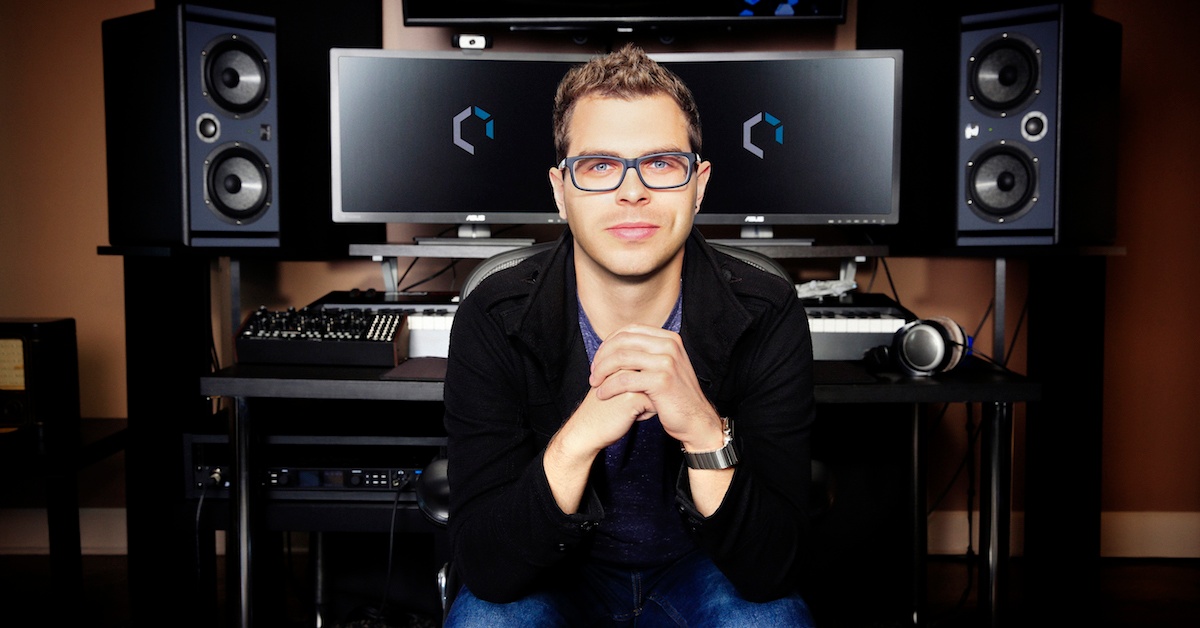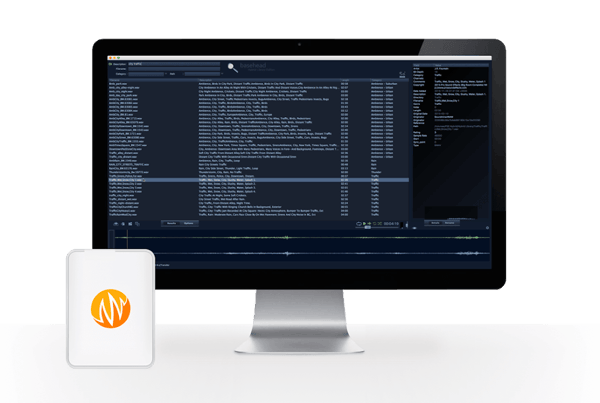
Learn how Richard Ludlow has built a successful game audio career and directs the sound team at his company, Hexany Audio.
Hexany Audio is a Los Angeles-based audio team specializing in original music and sound for games, VR and interactive media. Their credits boast a variety of projects from the music and sound for the Assassin’s Creed Syndicate trailer campaign, to sound design and audio implementation for Blade Runner Revelations (VR), sound design for King’s Quest (Xbox One/PS4/PC), and audio implementation for Disney Infinity (Wii) – along with a slew of indie games.
We had the chance to catch up with Hexany's Audio Director and Owner Richard Ludlow – who is also a long-time Pro Sound Effects client and early adopter of our Hybrid Library. Read our discussion below to discover his experiences starting the company, distributing workflow across the team, finding clients, and more.
You’ve covered a range of audio roles, (music producer on Moonlight Blade and Audio Implementer on Disney Infinity, to Sound Lead on King’s Quest, and Audio Director on Into The Stars). Where did you first start?
A great question! I actually got my start in games working on an indie title called PlaneShift, which was the first game I ever worked on. I started as a composer and then moved into sound designer and eventually served the role of helping to curate content from a number of other composers and sound designers in more of the role of an audio producer.
But my first console title was Family Guy: Back to the Multiverse, which I worked on as a sound designer and audio implementer while interning with Heavy Iron Studios. I had a great time working at Heavy Iron and actually spent the following summer with them interning again and working on Audio Implementation for Disney Infinity.
After that, my company Hexany Audio started taking off, and I play many different hats – frequently in the role of producer or Audio Director nowadays.
“We have seven core values that we try and use as guiding principles in everything we do. If I had to pick one to share it would probably be, ‘We do what we say we’re going to do.’”
What spurred your decision to form Hexany Audio? What challenges did you face?
Hexany was originally born more as a creative collective. While everyone is now a salaried employee, initially it was just a few friends who came together to combine our portfolios when pitching for work and to work on projects together.
The biggest challenge was probably figuring out how to turn it into a real company – something that could put food on the table. We didn’t have a ton of resources to look to, but there were a few folks who had gone through similar things in the past that were instrumental in guiding us through the process.
One thing that everyone told me when I started, though, was that the idea of salaried employees was a terrible one. We should contract with people as a full time employee was a costly expense that we likely wouldn’t be able to maintain throughout the year. I’m not a fan of working with contractors, though, due to the difficult with quality control and workflow, so I went against that advice and salaried employees have enabled our team to be immensely tight knit and are I believe one of our greatest assets.
How did you find clients when you first started Hexany?
Clients and projects always have come to us through some type of human connection. Be that a referral from someone else we worked with, meeting someone at a conference, or running into a developer at a sandwich shop – there’s always been that human component.
I know that some people have had success with getting clients through purely online means, but that has never been the case for us. Initially conferences and social events for game developers were a great place for us to meet potential clients and just network with others in the industry. I think the takeaway for me was that people like to work with other people that they have a personal connection with.
How do you distribute the workflow within the company?
Well there are 8 of us, so we have a pretty diverse set of skills. We have two fantastic sound designers – Justin Hollis and Kellen Fenton – our lead composer Matthew who handles most of the orchestral composition work we do, another composer/sound designer Jason Walsh who produces amazing electronic music and also handles sound design, our technical sound designer Nick Tomassetti who handles most of the in-engine integration and audio programming work, our associate producer Vinicius Barbosa who helps keep all the trains running, an intern, and myself.
Matthew and I co-own the company, and he’s all music all the time and I tend to gravitate more toward sound design. Though nowadays much of my time is spent reviewing content from our sound designers, doing mix sessions with our clients, and working with our clients and our team to figure out the concept and vision for a project. I also handle the voice over direction at our company.
“The biggest challenge was probably figuring out how to turn it into a real company…but there were a few folks who had gone through similar things in the past that were instrumental in guiding us through the process.”
Hexany works on a wide range of projects both locally and abroad. Do you find the process differs much with international clients?
Well aside from the obvious of not doing on-site work for our overseas clients, honestly the process isn’t much different. With music the process is pretty straight forward universally, but with sound we are usually working with one of two workflows:
- We are brought on to do a subset of sound effects for a project- be that weapons, UI, creatures, etc. This is usually the case for studios with an in-house audio team. And in this situation we are frequently just passing off assets that we design, without handling middleware implementation or in-engine integration.
- A big chunk of our work is handling both sound design and technical audio implementation / integration. And this is where we will get set up with source control (e.g. Perforce, SVN, Git, etc.) and be working directly in the game engine. This is the case if we’re brought in to design say a weapon system, or more frequently just handle sound design, integration, and mixing for the entire game. This is our favorite way to work as we get to go the deepest and make the product extremely polished. Because of fast internet and easy communication methods nowadays, we can do this with clients everywhere around the world.
Do you have a particular philosophy that you strive to maintain at Hexany?
We have seven core values that we try and use as guiding principles in everything we do. If I had to pick one to share, it would probably be “we do what we say we’re going to do.” I’ve found it so surprising how infrequently people actually do what they promise, so we place a high value on doing this whenever possible.
“Clients and projects always have come to us through some type of human connection...I think the takeaway for me was that people like to work with other people that they have a personal connection with.”

Do you still get regular opportunities to be creative and get in the thick of things, or do you find you're more regularly directing the process as a whole?
At the present I find myself more helping to bring all of the pieces together. Scoping out the creative vision with our clients, making sure our team’s work is fulfilling that vision, reviewing mixes, etc. But we’re hiring a new studio manager right now to help with some of the more logistical stuff I do, so hopefully that will help me get back a bit more to the creative side of things!
How has the Pro Sound Effects Hybrid Library been useful in your work and to Hexany as a business overall?
It’s a very good general library and is something we are frequently pulling assets from. The price is excellent for anyone starting out, so you can’t beat that – and the variety in it is pretty great as well. And for any library to be useful it needs to have good meta tagging, which the Hybrid library does. It’s one of those tools that has been and will continue to be part of our toolbox for years to come.
"[The Hybrid Library] is one of those tools that has been and will continue to be part of our toolbox for years to come."
As a lecturer, do you have any topics you frequent in your talks?
On the whole, I generally find people aren’t always talking about some of the less-glamorous topics like legal contracts, asset management, etc. – so I’m often asked to do something along those lines. There’s a lack of great information out there on these topics so it’s good to share and see what others are doing in this space.
Also more recently I’ve been asked to talk about audio for VR, as it’s something our company has done quite a bit of. While the space is still very new, the industry is starting to develop some techniques, so it’s fun to share those with each other and learn new approaches that others are also working in this space.
What inspires you to get up and do what you do each day?
The game industry is full of great people, many of which are doing very innovative things with their projects. We’re lucky enough to be working on some of them, and I feel very lucky that that’s the case. That and working with a great team of people at Hexany means that we have a lot of fun at work!

Finally, in the last year, can you give a Top 3 for games, films, or TV series that have caught your attention for their audio?
- I think the score to Cuphead is fantastic – it’s completely different than a lot of the music we hear nowadays in games and it works immensely well. There are so many games copying each other, so it was extremely refreshing to see something unexpected that worked great.
- I’m still super behind on my movies for 2017 – I haven’t seen Dunkirk or many of the other top acclaimed films that had great sound this past year. However I did see Star Wars: The Last Jedi, and it stood out for me as having as having some stellar sound design and an amazing mix – it had some surprises and I loved the result.
- Hellblade: Senua’s Sacrifice was another interesting surprise – again they did some unique things with sound and that’s where things stand out for me- when they do something different.
Thanks to Katie Tarrant for conducting this interview, and to Richard Ludlow for participating!
Follow Hexany Audio:
Website: hexanyaudio.com
Twitter: @HexanyAudio
Facebook: Hexany Audio
Follow Katie Tarrant:
Twitter: @ktarrantaudio
Website: katietarrant.com












